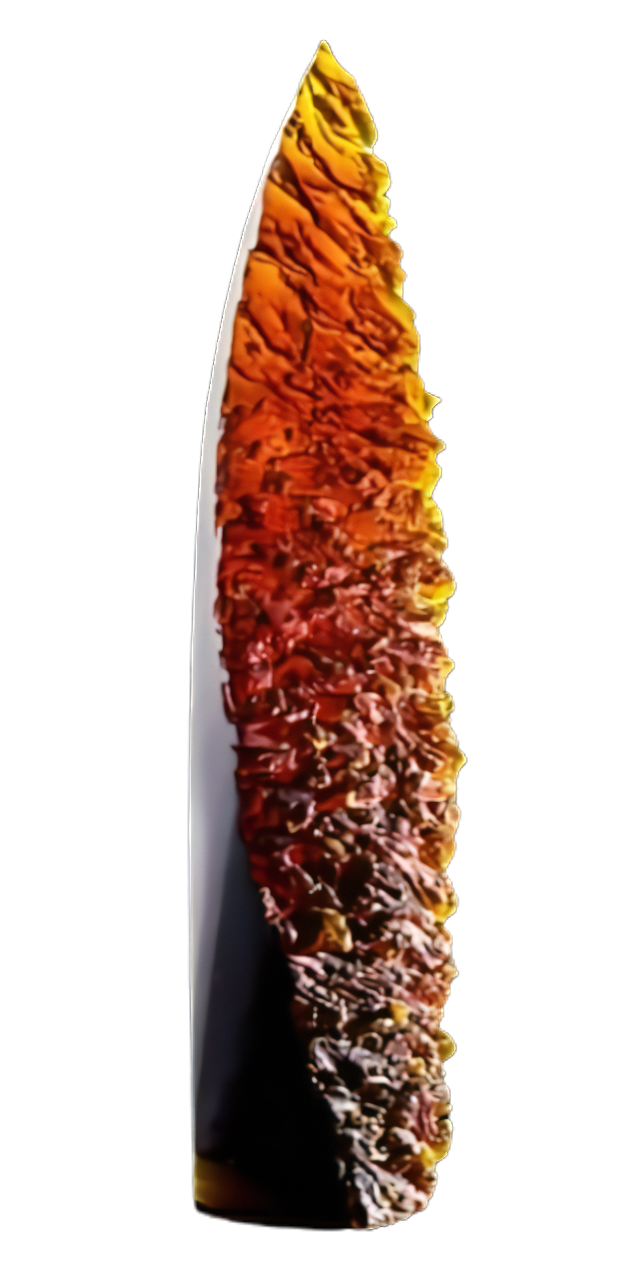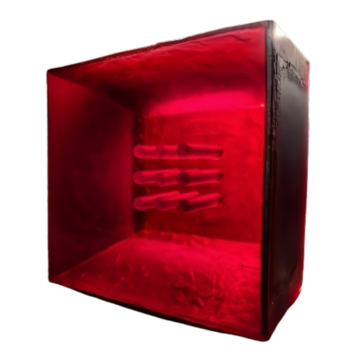Biography
Early Life and Education
Zora Palová was born in 1947 in Bratislava, Slovakia, which was then part of Czechoslovakia. She attended the School of Applied Arts in Bratislava, where she initially focused on painting and sculpture. Her artistic journey took a significant turn when she shifted her focus to architecture and glass, studying under the guidance of Václav Cigler at the Academy of Fine Arts and Design in Bratislava.
Career and Artistic Development
Palová began her career as a teacher at a public art school in Nitra and worked as a designer before returning to her studies in art. Her work is characterized by abstract, sculptural forms that often explore the fluid and transformative qualities of glass. She is known for creating sculptures with fluid gestures that break or pierce surfaces, resembling natural phenomena like ripples on the sea.
From 1996 to 2003, Palová served as the head of the glass department at the University of Sunderland in England, where she also held the position of Research Professor. Her tenure at Sunderland was marked by significant contributions to the field of glass art, both in terms of education and artistic innovation.
Awards and Recognitions
Zora Palová has received numerous awards and recognitions throughout her career, highlighting her contributions to contemporary glass art. Some of her notable awards include:
- 2006: Third Prize at the Coburg Glass Prize for Contemporary Glass in Europe, Coburg, Germany.
- 2007: Cristal Wing, the Slovak State Award for the Personality of the Year.
- 2008: Rakow Commission from the Corning Museum of Glass, New York.
Exhibitions and Collections
Palová’s work has been exhibited internationally and is included in many prominent public collections. Some of the notable institutions that house her work include:
- Corning Museum of Glass, Corning, New York, USA
- Slovak National Gallery, Bratislava, Slovakia
- Ulster Museum, Belfast, Ireland
- Victoria & Albert Museum, London, England
- Kunstsammlungen der Veste Coburg, Coburg, Germany
Personal Life
Zora Palová is married to Štěpán Pala, another distinguished glass artist. The couple met in the 1970s while studying at the Academy of Fine Arts and Design in Bratislava. Their artistic styles, while distinct, complement each other; Palová’s work is known for its spontaneous and intuitive forms, while Pala’s work is characterized by precise, mathematical planning.
Conclusion
Zora Palová’s contributions to the field of glass art are significant and enduring. Her innovative approach to sculptural forms and her ability to capture the ethereal qualities of glass have earned her a prominent place in contemporary art. Her work continues to inspire and influence new generations of artists and collectors around the world. Zora Palova sadly passed away January 2025.





